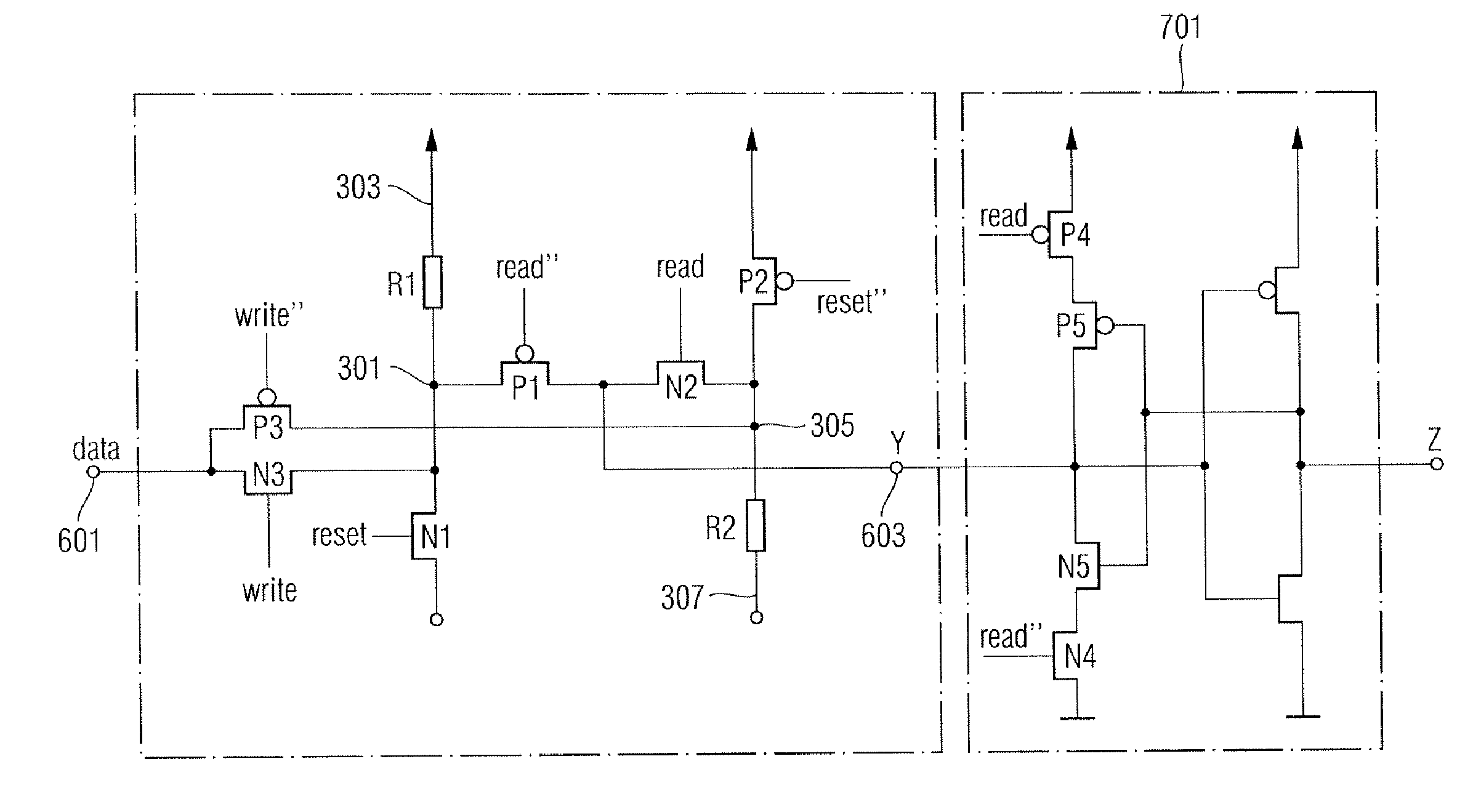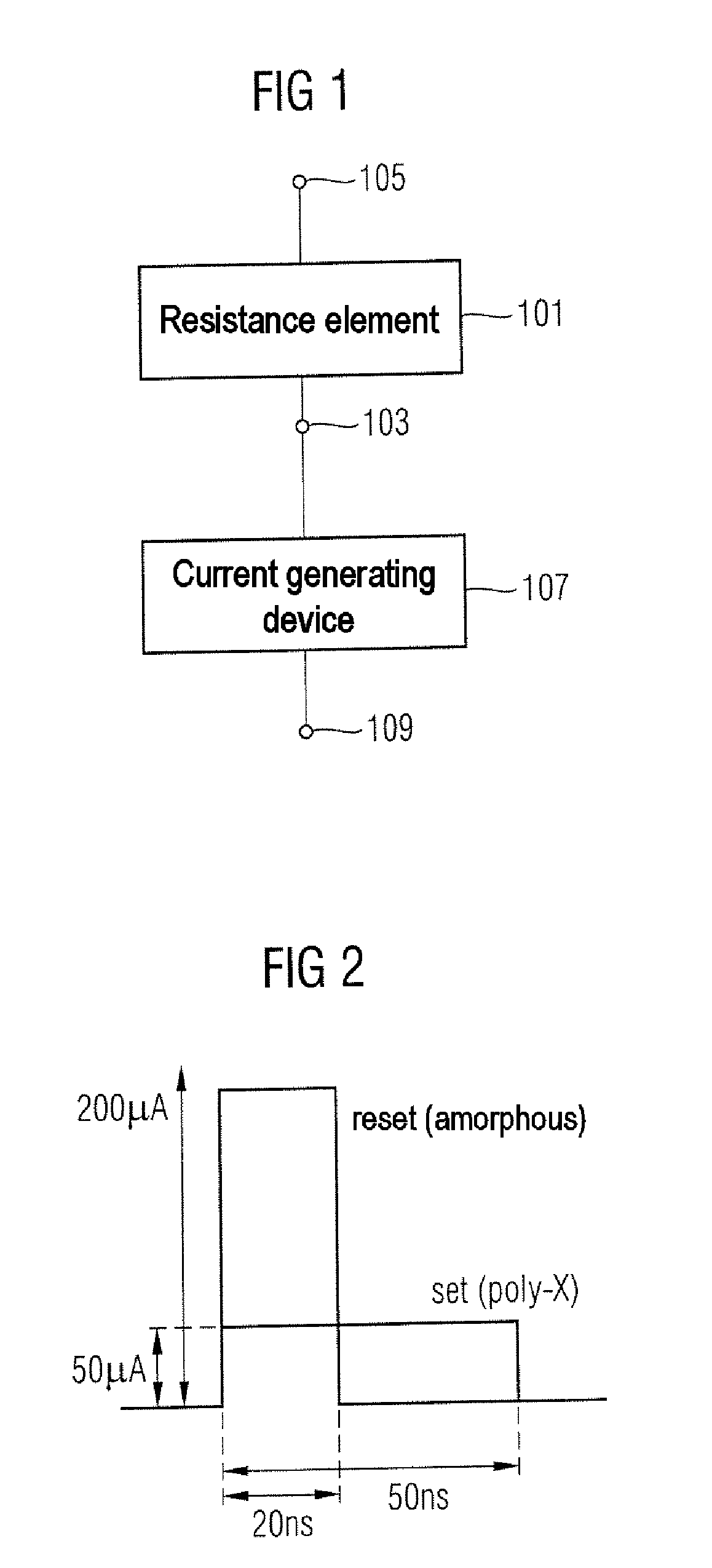Memory element, memory read-out element and memory cell
a memory element and read-out element technology, applied in the field of non-volatile storage using resistance elements, can solve the problems of limited scaling potential, large area usage, and lock cells, and achieve the effect of allowing only a limited number of write cycles, and limited scaling potential
- Summary
- Abstract
- Description
- Claims
- Application Information
AI Technical Summary
Benefits of technology
Problems solved by technology
Method used
Image
Examples
Embodiment Construction
[0046] In one embodiment, the memory element illustrated in FIG. 1 comprises a resistance element 101 having a first terminal 103 and a second terminal 105. The memory element furthermore comprises a current generating device 107, the output of which is coupled, for example, electrically connected, to the first terminal 103 of the resistance element 101.
[0047] The current generating device 107 may furthermore comprise a terminal 109, to which a reference potential, for example, an earth potential, can be applied.
[0048] The resistance element 101 has a first resistance value in a first state and a second resistance value in a second state, the two resistance values being different from one another. Furthermore, the states are reversible so that the resistance element 101 can be converted both from the first state into the second state and from the second state into the first state. The resistance element 101 may be a PCM element, for example, in which the first state is an amorphou...
PUM
 Login to View More
Login to View More Abstract
Description
Claims
Application Information
 Login to View More
Login to View More - R&D
- Intellectual Property
- Life Sciences
- Materials
- Tech Scout
- Unparalleled Data Quality
- Higher Quality Content
- 60% Fewer Hallucinations
Browse by: Latest US Patents, China's latest patents, Technical Efficacy Thesaurus, Application Domain, Technology Topic, Popular Technical Reports.
© 2025 PatSnap. All rights reserved.Legal|Privacy policy|Modern Slavery Act Transparency Statement|Sitemap|About US| Contact US: help@patsnap.com



